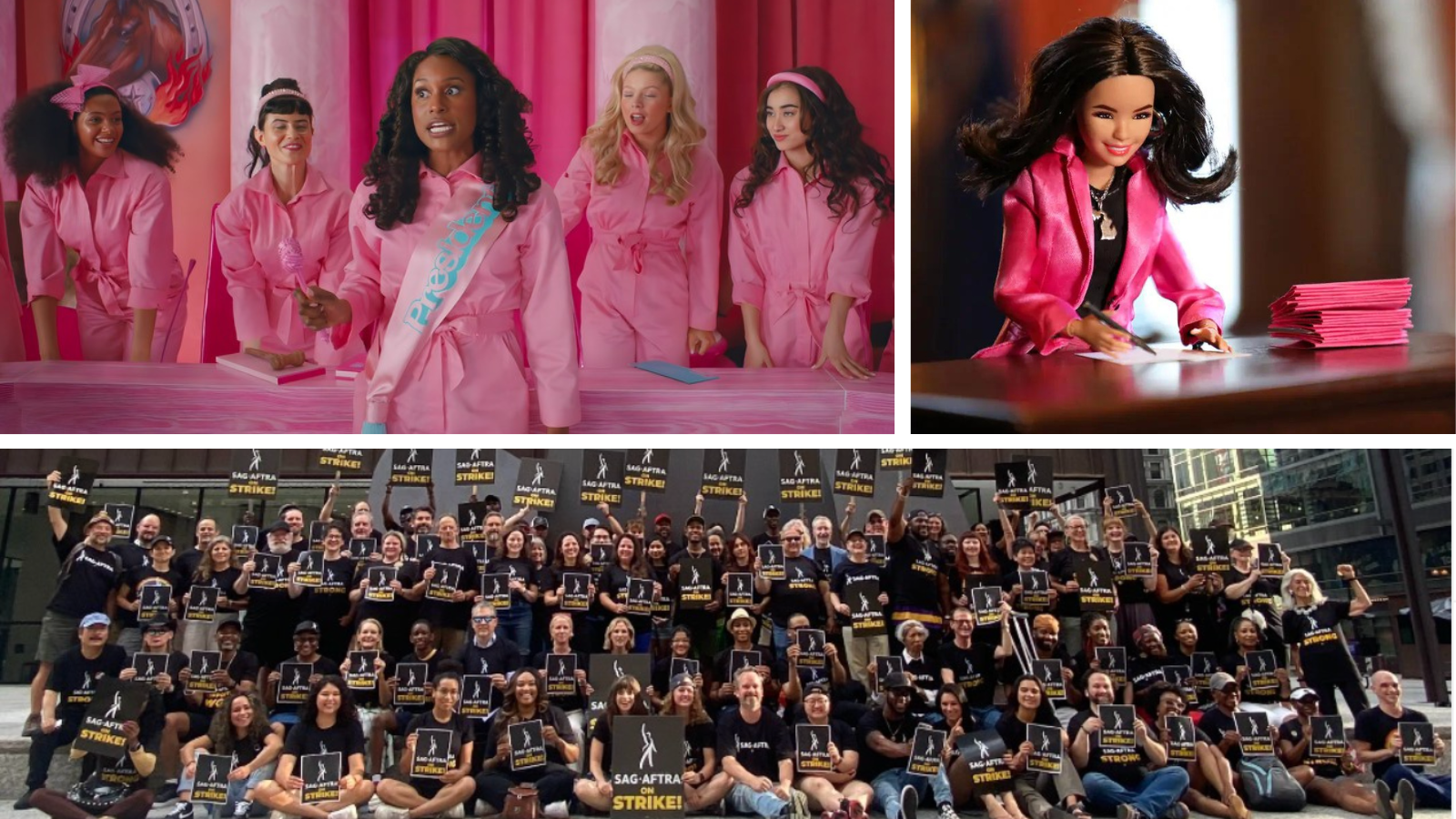Starvation, deprivation and torture permeate Unbroken, making director Angelina Jolie’s film (based on Laura Hillenbrand’s book), one that invokes flinches, jerks, audible gasps and covering one’s eyes. The edge-of-the-seat opening sequence, set in a B-24 bomber that is being shot apart above the Pacific Ocean, captures the noise of war as well as the heart-pumping adrenaline and frenetic pace of being in the thick of battle, where death seems likely and imminent.
While scenes such as these are an onslaught for the senses, at other times the film prompts a rapt stillness as one becomes immersed in the epic story of Louis Zamperini’s historical and valiant journey. Yet some critics are saying the film feels “square” and “suffocated by its own nobility,” while others condemn it for playing it safe, for taking the old-school Hollywood route of an “inspirational” war picture.
One wonders if the jibes at the supposed “conventional narrative design” would be lobbed as readily were the director Steven Spielberg, Clint Eastwood or Oliver Stone. Or, if gendered descriptions of the film as being “placed on a pedestal” as “awards bait” would be as likely. Methinks not.
A male director at the helm would likely garner different responses, as well as more assurance of nominations in best director and best film categories. Statistically this claim holds up, given that only four women have ever been nominated for the Oscar in direction—with only one win, by Katherine Bigelow for The Hurt Locker. In fact, if Jolie and Selma‘s director Ava DuVernay both get nominated, as buzz portends, this would mark the first time two women directors were nominated in the same year. I am rooting for them both.
I disagree with those writing of the film as suffering from “a reined-in, by-the-book quality” or that “Jolie’s stolidly conventional approach” is lacking. Indeed, Jolie’s masterful direction offers a different approach to such films—one that prompts us to put ourselves in the shoes of a determined underdog rather than viewing battle and its consequences from a distance.
Further, Zamperini is a rare heroic character in Hollywood films of late—not one with a cape or sword or magic wand, just a bullish, resilient “wop” who survives 47 days on a raft only to be captured by the Japanese and held as a prisoner of war for two years. Jolie captures this everday heroism without turning Zamperini into a super-human symbol or an extraordinary anomaly. Instead, he is depicted as human, foibles and all.
Similarly, the film depicts the lead POW torturer, Watanabe, not as a foreign archvillain but as a complex mix of vulnerability and self-loathing. The actor who plays him, Japanese pop-star Miyavi, shares this sense of his character, noting ,“I didn’t want to be just a bad guy. I wanted to put humanity in this role.” He stroke to reveal Watanabe’s character as “both crazy and sadistic, but also weak and traumatized.” This trauma is encapsulated in one of the many silent moments of the film—when the camera pans in on a young Watanabe, an expression of fear on his childish face, as he stands next to a hulking, menacing form: his father in military uniform.
As noted in one review, “The most compelling moments [of the film] are all nonverbal …” This is surely due not only to Jolie’s direction, but also to director of photography Roger Deakins, whose evocative cinematography compliments Jolie’s eye for emotional and experiential verisimilitude.
Granted, most of the stories the film tells we have seen before. Working class rebel bullied for his difference makes good, first through grit, then through dedication to athleticism, then through the trials of war. His individual triumph ultimately result in an apple pie American post-war life. We learn of that only in the closing words and images that detail Zamperini getting married, having kids and participating in the Olympics again—not as a competitor, but running with the Olympic torch at age 80 in Japan, no less, the place where he endured his two years of torture. Yet, the film offers fresh perspectives on the two key genres it centers on: the survival narrative and the war movie.
The first is captured viscerally as the three plane crash survivors, one of them our hero, muddle their way through 47 days adrift in the ocean. Like the best of this genre—Alfred Hitchcock’s Lifeboat or Ang Lee’s recent Life of Pi— these scenes capture the human dedication to live. Sharks glide menacingly around the raft, offering some of the most fear-inducing moments of the film
The literal eating-machines the sharks represent morph into other dangers: the maw of insanity that solitary confinement threatens when Zamperini is first captured, followed by the brutal beatings, both physical and emotional, carried out by the montrous Watanabe. Sometimes the focus on brutality, violence and humans forced to endure deprivation, beatings and hard labor feels a bit voyeuristic and prurient, especially when one is nestled in a comfy cinema chair with a tub of greasy popcorn. At other times, the cinematography is a bit too beautiful, romanticizing war, prison camp and the violent underbelly of humanity via mesmerizing images.
Yet despite the epic nods to patriotism and comraderie forged in battle, Jolie makes the story intimate and personal. Perhaps this can be partially attributed to how close she and Zamperini, who died at age 97 before the film’s release, became. In a piece from Vanity Fair, she calls him “kind of like a father figure,” and notes his insistence that the film convey not that he was extraordinary but rather “how extraordinary can be.” In the same article, Jolie said she wants the film to be “a reminder that the individual spirit—the willingness to do good and stand for something—is very, very powerful.”
Given her work with the UN over the past 14 years, where she has focused on war refugees and ending conflict-related global sexual violence, Jolie’s empathetic, emotional take is not surprising. Janine Di Giovannni, the author of the Vanity Fair piece who has worked with her subject extensively, hints that perhaps Jolie’s willingness to be emotionally bare is what makes her not only a great ambassador for peace but also a great director. “Her empathy is vast … ” writes Di Giovanni, “in contrast to how we typically view officials or envoys, she grows emotional and sometimes, when alone and thinking about what she has encountered, becomes tearful—and is not ashamed of it.”
Jolie’s decision to opt for a prophylactic double mastectomy invoke similar emotional strength. Soon after the surgery, she traveled to Rwanda and the Democratic Republic of Congo to carry on her work with the UN, not addressing her surgery for public consumption before doing so. Later, her op-ed piece in The New York Times offered support for others facing similar decisions. Whether in response to the insensitive buzz of popular culture about one of Hollywood’s beauty icons no longer having breasts, or merely a personal choice to help others, Jolie wrote, “ I do not feel any less of a woman. … I feel empowered that I made a strong choice that in no way diminishes my femininity.”
It is conceivable that Jolie’s own determination to succeed in male-dominated Hollywood and to make a difference on the global stage, let alone the looming prospect of being stricken with the same cancer that killer her mother at age 56, informed her directorial choices in Unbroken. Like Zamperini, she has undeniable grit. In a recent interview with NPR, she notes that having “faith and the strength of the human spirit … can actually pull us through — it has in the past — and it’s something to remember in our dark hours, that this exists. And I wanted to put that out into the world because I think we all need that right now.”
Before his death, Zamperini asked Jolie to “make a film that reminds people that they have greatness inside themselves.” She has certainly achieved that.





